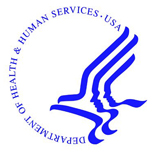HIV Prevention Resource Allocation Modeling Pilot (HIV RAMP)
Topics
 The U.S. National HIV/AIDS Strategy (NHAS) calls on national, state and local programs to focus efforts in communities where HIV is concentrated and to target resources on tailored combinations of effective, evidence-based strategies. As jurisdictions work to apply these principles, some have employed resource allocation modeling to help inform their decision making about how best to utilize their available funds so as to maximize the number of new HIV infections averted. As noted in a recent article on the subject, “Resource allocation models can provide valuable guidance to the rational allocation of funds. Improving the use of funds by targeting areas of greatest return may lead to better and/or greater health outcomes.”
The U.S. National HIV/AIDS Strategy (NHAS) calls on national, state and local programs to focus efforts in communities where HIV is concentrated and to target resources on tailored combinations of effective, evidence-based strategies. As jurisdictions work to apply these principles, some have employed resource allocation modeling to help inform their decision making about how best to utilize their available funds so as to maximize the number of new HIV infections averted. As noted in a recent article on the subject, “Resource allocation models can provide valuable guidance to the rational allocation of funds. Improving the use of funds by targeting areas of greatest return may lead to better and/or greater health outcomes.”
A pilot project to explore the feasibility of scaling-up of the use of such modeling is now underway with resources provided by the White House Office of National AIDS Policy (ONAP). The HHS Office of HIV/AIDS and Infectious Disease Policy (OHAIDP) is leading the one-year project in collaboration with the Centers for Disease Control and Prevention (CDC). CDC previously worked in partnership with Philadelphia’s Department of Public Health to develop and implement an HIV prevention resource allocation model to inform activities required under a CDC grant for Enhanced Comprehensive HIV Prevention Planning.
That model was developed to help Philadelphia’s health department leadership identify the optimal allocation of HIV prevention funds across populations and prevention interventions that would prevent the most new HIV infections. Using local demographic and HIV epidemiological data inputs, and based on calculations of the cost per new infection averted, the model recommended the optimal allocation of the jurisdiction's HIV prevention budget among several evidence-based interventions for the populations most impacted. Feedback from Philadelphia indicated that the model’s outputs served as a very useful “roadmap” to inform decision making for HIV prevention resource allocation within the jurisdiction, informing both applications for federal funds as well as efforts to strengthen local HIV prevention activities.
The current project, HIV RAMP, involves refining and piloting the original Philadelphia model in three additional jurisdictions that have different local profiles and HIV prevalence rates (Chicago, Nebraska, and Alabama), testing a technical assistance (TA) protocol to support jurisdictions in using the model, and assessing the feasibility of a software or online version of the model that could be more broadly used by other health departments.
“Because making decisions about how to spend HIV prevention funding is never ‘black and white,’ health departments need tools to help them decide how to support the best combinations of effective, evidence-based prevention strategies in their communities," said Dr. Ronald Valdiserri, Deputy Assistant Secretary for Health and Director of OHAIDP. “Through this pilot project, we hope to develop a practical tool that can help communities apply the principles of the NHAS on the ground.”
As part of this pilot, OHAIDP convened a full-day consultation in January to obtain input and feedback from intended users as well as experts in information technology, public health, and capacity building. The participants were charged with helping to refine plans for further development of the HIV RAMP and to identify the potential types of technical assistance that would be needed to ensure the most effective, user-friendly end products. Among the feedback and recommendations shared were the following:
- Move forward quickly. Participants generally concurred that the project had significant potential value and should move forward expeditiously so that findings can be widely shared.
- Develop clear documentation. Participants recommended that very clear code books and user guides be developed, outlining the model’s operational assumptions.
- Plan to engage community members throughout the process. Participants recommended that health departments participating in the pilot receive TA on engaging community stakeholders throughout the process, particularly those who will be involved in decision making based on the model outputs as well as implementing the resultant program efforts. They noted that such engagement will help to improve the acceptability of the results, which may involve reallocation of resources from the current state to the optimal state modeled.
- Offer technical assistance about what happens once you have modeled. Participants recommended that TA extend beyond how to use the modeling tool, to include support in determining what to do with the model’s outputs. Suggested topics included: What stakeholders should be involved in interpreting what the outputs mean? How can jurisdictions assess the capacity of the community’s HIV workforce to implement the prioritized interventions?
- Consider downstreaming local capacity to implement prioritized interventions. Participants raised concerns about local capacity to implement the model’s prioritized interventions, accessing the prioritized populations in an effective way, and implementing interventions to scale with the fidelity necessary to achieve the modeled effects. They suggested that assessing and planning to strengthen this capacity must be a key component of any TA offered to health departments.
Models help us sort through complicated questions and allow us to envision alternative scenarios. As this pilot unfolds in the coming months, we will continue to share progress highlights and lessons that may be of use to others.